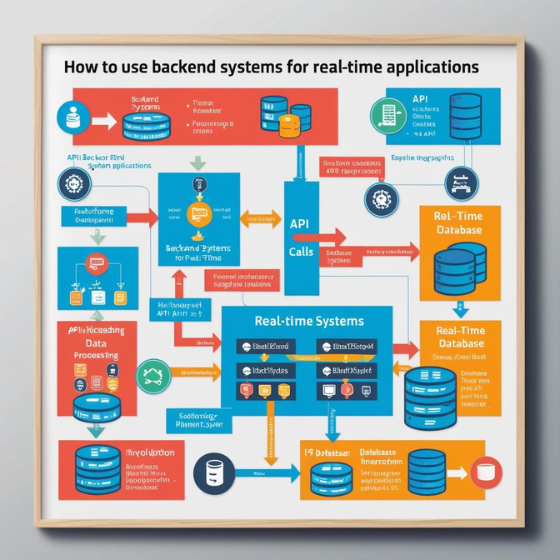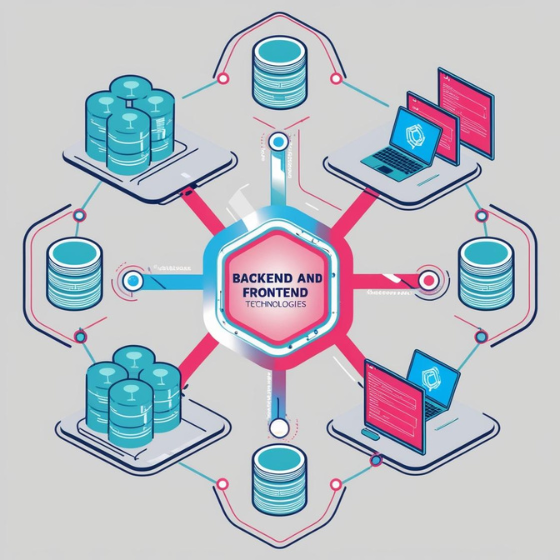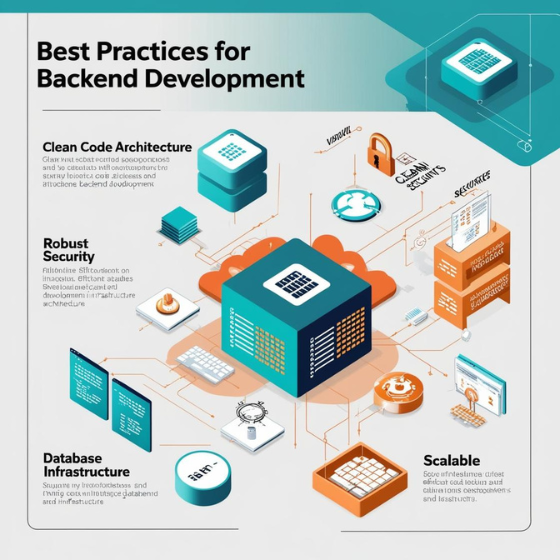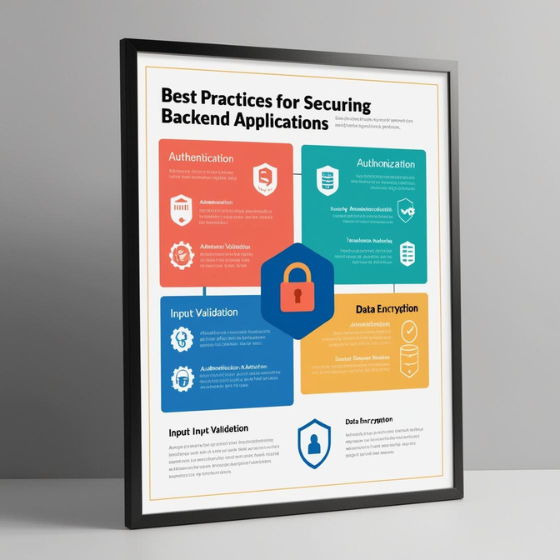Introduction: Understanding the Role of Databases in Backend Development
Did you know that nearly 2.5 quintillion bytes of data are created every day? As businesses and users generate more and more data, the role of databases in backend development becomes increasingly crucial. In the world of backend development, a database is more than just a tool for storing information—it’s the engine that drives data management, scalability, and overall system performance. In this blog, we’ll explore the role of databases in backend development, how they function, and why selecting the right database can significantly impact the success of your backend infrastructure.
From maintaining data consistency to ensuring fast query responses, databases are at the heart of backend architecture. Understanding how databases operate and their impact on your backend systems will help you build scalable, efficient, and secure applications. Whether you’re a developer or a business owner, gaining insights into database performance and management will benefit your technical strategy.
Why Databases Are Critical to Backend Development
In any web or mobile application, backend development refers to the server-side process that handles business logic, data storage, and communication with front-end components. Central to this process is the database, which stores and organizes the data that applications rely on. Here’s why databases are crucial to backend development:
1. Data Storage and Retrieval
At its core, the role of databases in backend development is to provide a reliable system for storing and retrieving data. Whether it’s user information, transaction records, or product details, databases store this data in an organized manner, ensuring that developers can easily access it when needed.
- Structured Storage: Databases organize data in tables, rows, and columns, making it easy to retrieve specific pieces of information.
- Fast Retrieval: The backend can access and manipulate data quickly with optimized queries, ensuring that users receive real-time results.
- Scalability: As the application grows, databases can scale to handle larger volumes of data efficiently.
2. Data Consistency and Integrity
Ensuring the accuracy and consistency of data is essential in backend development. Databases implement various techniques to maintain data integrity, such as:
- ACID Properties: Most relational databases follow the ACID (Atomicity, Consistency, Isolation, Durability) principles, which guarantee that database transactions are processed reliably.
- Referential Integrity: Databases ensure that relationships between different pieces of data are consistent, such as linking customer information to purchase records.
Without robust data integrity, backend systems would risk losing or corrupting crucial information, undermining the entire application.
3. Security
The role of databases in backend development also extends to ensuring the security of sensitive data. Modern databases offer advanced encryption and access control features that help protect data from unauthorized access.
- Encryption: Data stored in the database is encrypted, ensuring that even if the system is compromised, the data remains unreadable.
- Access Control: Databases allow developers to set permissions, limiting access to specific parts of the data based on user roles, ensuring that sensitive information remains secure.
4. Data Relationships and Query Optimization
Databases allow developers to define complex relationships between data entities. For instance, a customer can have multiple orders, and each order can have multiple items. Backend systems rely on these relationships to provide meaningful results.
- Foreign Keys: These keys create relationships between tables, ensuring that data is connected and coherent across the system.
- Indexing: Databases optimize query performance through indexing, making searches and data retrieval faster, even with large datasets.
Optimizing queries and relationships ensures that backend systems remain efficient and responsive, even under heavy load.
Types of Databases in Backend Development
There are various types of databases available, each with its own advantages and use cases. Understanding these differences is crucial when choosing the right database for your backend system.
1. Relational Databases (SQL)
Relational databases, such as MySQL, PostgreSQL, and Oracle, store data in tables with predefined schemas and support SQL (Structured Query Language) for data manipulation.
- Structured Data: These databases work well when the data is structured and can be organized into tables.
- ACID Compliant: Relational databases are ideal for systems where data integrity and consistency are critical, such as in banking or e-commerce applications.
2. NoSQL Databases
NoSQL databases, including MongoDB, Cassandra, and Redis, offer a more flexible approach to data storage. Unlike relational databases, NoSQL databases do not rely on predefined schemas and can store unstructured data.
- Scalability: NoSQL databases are designed to scale horizontally, making them suitable for large-scale applications that handle massive amounts of data.
- Unstructured Data: NoSQL is ideal for handling data that doesn’t fit neatly into tables, such as social media posts, sensor data, or log files.
3. In-Memory Databases
In-memory databases like Redis and Memcached store data in the server’s RAM rather than on disk, offering extremely fast read and write speeds. These databases are often used for caching and session storage.
- Speed: In-memory databases are ideal for applications that require quick data access, such as real-time analytics, gaming, or online shopping carts.
- Temporary Storage: They are best suited for temporary data storage that doesn’t need to be permanently stored in the main database.
4. Graph Databases
Graph databases, such as Neo4j, store data in nodes and edges, making them well-suited for applications that require complex relationships between data points.
- Complex Relationships: Graph databases excel at handling complex networks, such as social networks, recommendation engines, and fraud detection systems.
- Real-time Insights: They allow developers to run advanced queries to gain insights from data relationships quickly.
Best Practices for Database Optimization in Backend Development
Optimizing databases is essential to ensure that your backend system performs efficiently and scales with growing demands. Here are some best practices for database optimization:
1. Use Indexing Wisely
Indexes are powerful tools for improving query performance by allowing the database to quickly locate the requested data. However, overusing indexes can slow down write operations. Therefore, it’s important to use indexing selectively and strategically.
2. Normalize Data
Data normalization reduces redundancy and improves data integrity. By structuring your data into smaller tables and using foreign keys to define relationships, you can prevent data anomalies and ensure the accuracy of your database.
3. Regular Backups and Maintenance
Regular backups are essential to protect against data loss in case of hardware failure or human error. Scheduled maintenance tasks, such as defragmenting the database and removing outdated records, help keep your database running smoothly.
4. Optimize Queries
Complex queries can put a strain on your database, especially with large datasets. Use query optimization techniques such as:
- Limit Results: Retrieve only the necessary data rather than pulling everything.
- Avoid Nested Queries: Minimize nested queries to reduce processing time.
By fine-tuning your queries, you can improve both response times and system efficiency.
Conclusion: The Future of Databases in Backend Development
The role of databases in backend development is indispensable, as they serve as the foundation for data storage, retrieval, and management. As applications continue to grow and evolve, so too will the role of databases, with new technologies emerging to handle big data, improve security, and optimize performance.
When choosing the right database for your backend development, it’s important to consider factors such as data structure, scalability, and security. By understanding the role of databases in backend development and leveraging best practices for optimization, you can ensure that your backend systems are not only efficient but also scalable and secure.
If you’re ready to improve your backend development strategy, explore Sodio’s database solutions. Our team can help you select and optimize the right database for your needs, ensuring that your application performs at its best.
For more insights into backend development, check out our other blog posts or contact us for personalized consulting on your database needs!







